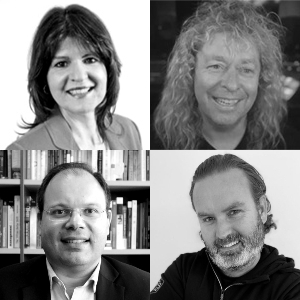Everyone’s reality is slightly different. We all experience the world around us in different ways. Our world is sensed as numbers and electrical impulses that our brains then turn into something meaningful. At Extrasensory, everyone was challenged to make sense of the world of the senses and find the limits to their own. There were many incredible sights, tastes and sensations to behold while exploring the magnificent spaces of the Parliament of Victoria!
As an animator, most of Dr Drew Berry’s days are spent reading scientific literature and going on long walks to think about what he reads while his computer runs tasks. There is a great deal of data on cellular processes, however the full story is often scattered among multiple studies and papers (i.e. all the details of one machine complex may be comprised of multiple proteins that work together, and each is described individually). Dr Berry therefore has to piece the jigsaw puzzle together to show the big picture while keeping the smaller details accurate. He also has to make artistic choices that may not always reflect the science of what’s going on. Colour is not relevant at the cellular and molecular levels; but he uses it in his animations to evoke moods and emotions, allowing him to better engage his audiences and also make it easier to distinguish between different components and processes of a cell.
While antibiotics have reduced the global burden of infectious disease, these miracle drugs are no longer working against emerging “superbugs.” A recent report from the UK estimates that, by 2050, nearly 10 million people are likely to die from drug-resistant infections if the current trends persist. In response, Professor Elena Ivanova and her team have generated bactericidal surfaces that physically rupture bacterial cells in a few hundred seconds without harming animal cells. The rapidness with which they kill ensures that there is little opportunity for bacteria to adapt and become resistant. In the middle of a global antimicrobial resistance crisis, Professor Ivanova’s work provides hope that we haven’t yet lost the fight against superbugs!
Warmest congratulations to Professor Trevor Lithgow! Trevor is this year’s winner of the prestigious RSV Medal for Excellence in Scientific Research in Category I: Biological Sciences (non-human). The award of the Medal to Professor Lithgow acknowledges his outstanding contributions to the fields of Biochemistry and Cell Biology. Based at the Department of Microbiology within Monash University’s Biomedicine Discovery Institute, he heads a team researchers to examine cellular microbiology, uncovering clues on how to tackle important issues like the rise of antibiotic-resistant bacteria – a priority on the Global Health Agenda. The knowledge his work has uncovered provides an essential step towards developing new anti-microbial strategies required by this century’s environmental, agricultural and health industries.
Review by by Helen Gardiner van de Pol
As science communicators, we are always being asked to evaluate our activities and demonstrate impact. Teachers know this well. How do you know which part of what program helped form the adult you see before you today? That science outreach event you planned for 8-9-year-olds some 20 years ago, did it impact those children as intended? Did it contribute to their later decision to choose a career in science? Did it make them more scientifically literate even though they grew up to do art? If we interviewed them today, would they correctly recall your wonderful program and describe how it changed their life or would it just be part of a fog of memories which included fun trips to the museum with their favourite aunt who was a scientist?









